
iPhone Moon, Asteroid Eros
Posted: 31 January 2012
I opened the observatory, Monday, 30 January, at 1805 MST, 65°F. There were some clouds (with a forecast of more). I planned to participate in the "Eros and the solar parallax" project at 07UT (0000 MST) so I hoped for clear skies. At 1814 MST, viewed Venus at 77X. Good gibbous phase visible. Then went to the moon and viewed it at 77X, 133X, 206X, and 364X. Seeing was excellent. I then began setting up for iPhone afocal imaging using the MX-1 afocal adapter. Switched to the visual back. But first, I took some photos with the D7000 DSLR showing the moon and Jupiter. This is a f/16, 1/200sec, 122mm, ISO 500, exposure:
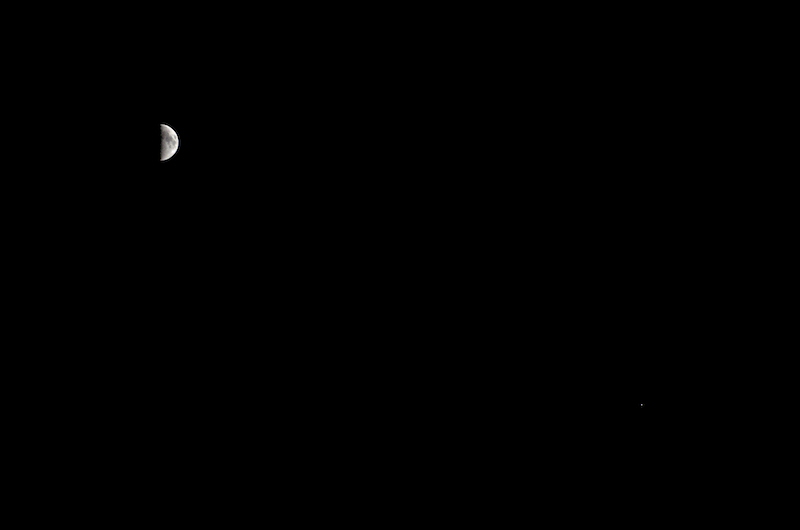
Moon, 77X, with iPhone 4 Camera app:
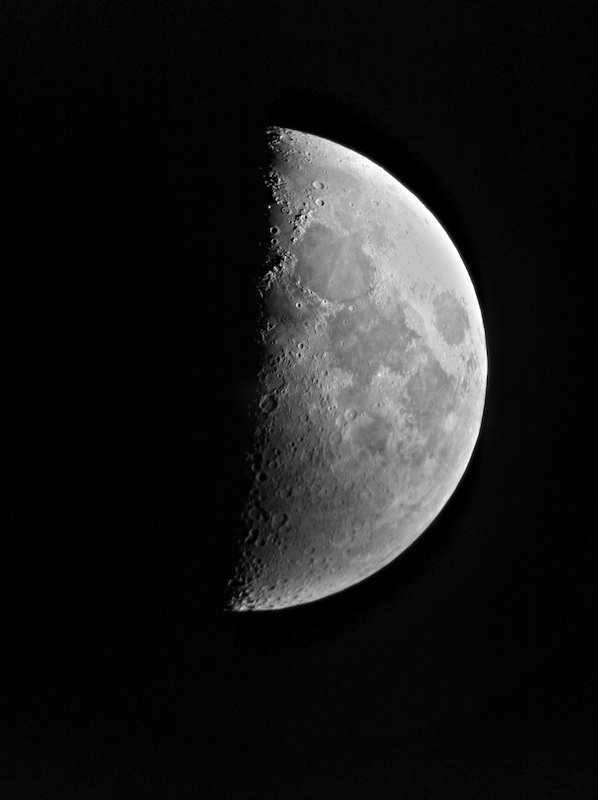
The next 4 iPhone images along the terminator were taken afocal 222X and cropped from the full-frame images.
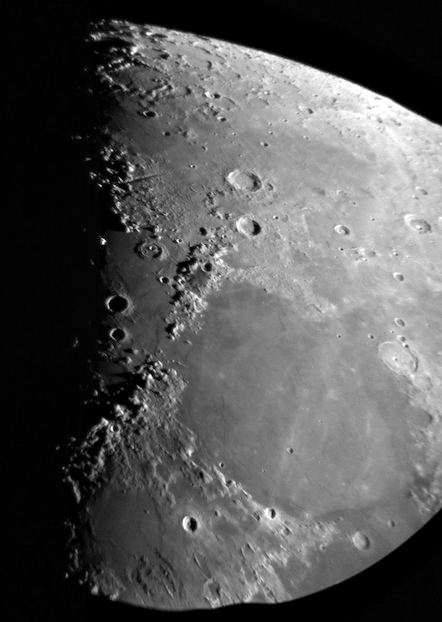
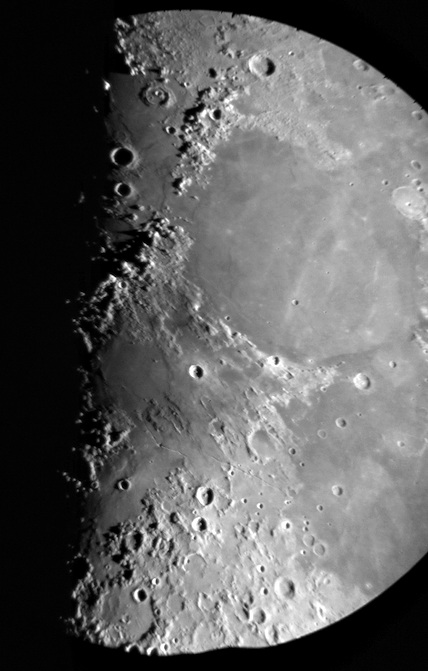
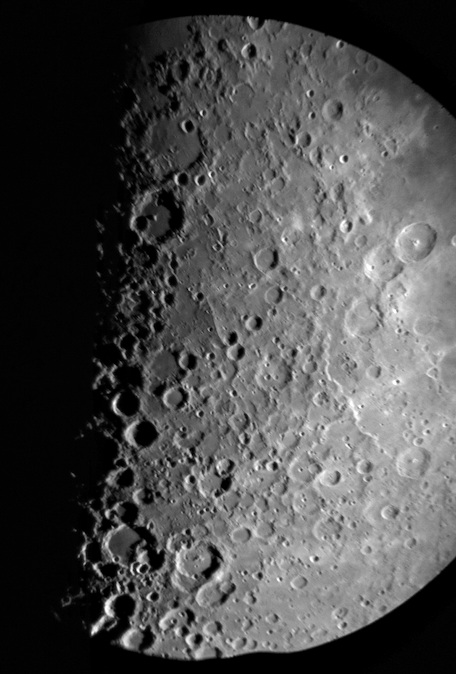
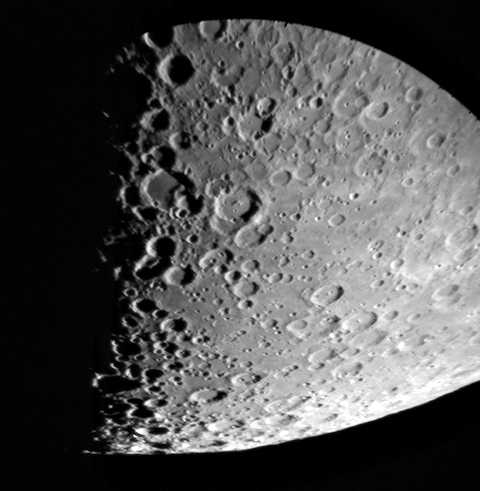
This is the "Lunar X", iPhone 4, afocal 444X, cropped from full-frame:
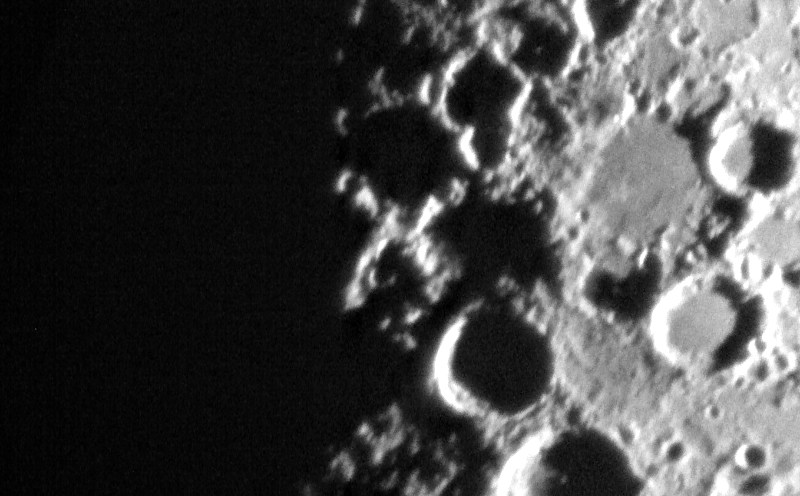
From 1900 MST to 2100 MST, I monitored sunrise at Mons Hadley. The mountain shadow was impressive. These next two iPhone images, cropped from the full-frame images, show the change in the shadow over time.
1856 MST, 444X, MX-1
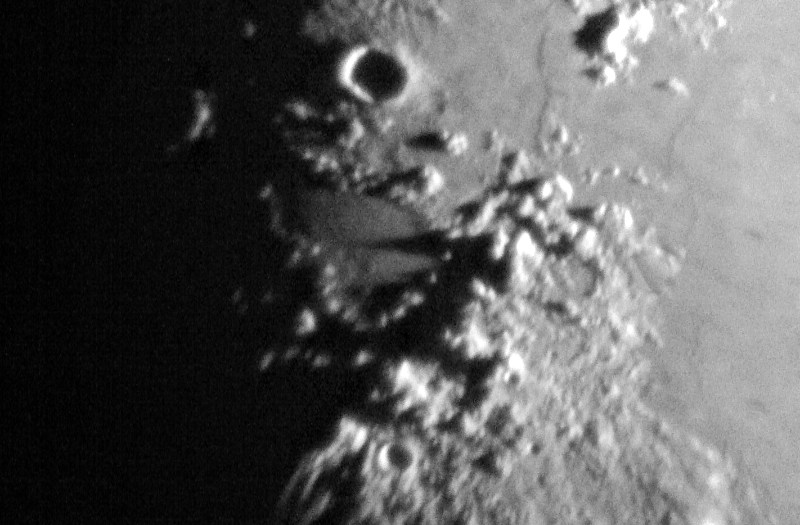
2013 MST, 206X, Handheld
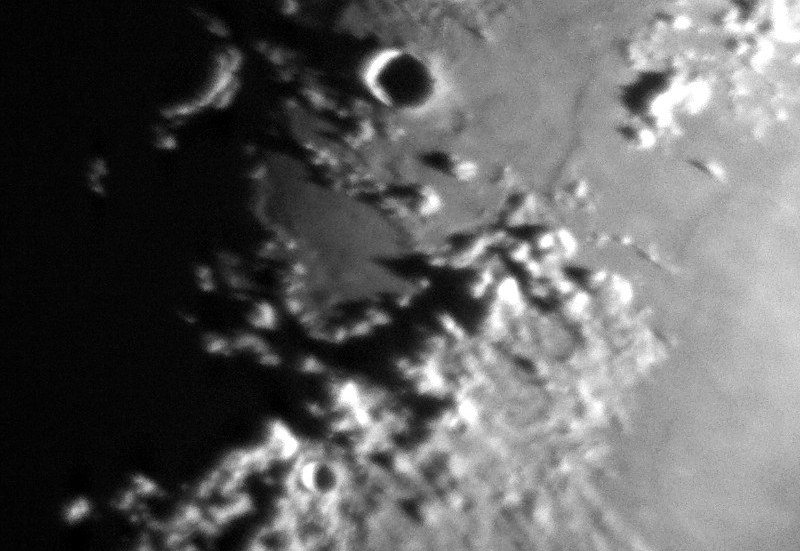
At 1911 MST, viewed Jupiter at 77X, 133X, 206X, and 364X. Four moons were visible, as was the Great Red Spot. I added the 2X Barlow Lens to the 5.5mm eyepiece (yielding 727X) and observed the four moons. Their disks were easily seen, especially Ganymede's (being the largest moon). Io showed a distinct orange color. I went back to the moon and toured the terminator at 206X and 364X. The views were super at 364X.
At 2000 MST, in preparation for the Eros project imaging, I checked the new HH:MM:SS clock with WWV. I had also checked it two nights ago. The clock had gained 5 seconds in 48 hours. Egads. Reset the clock to the correct WWV time.
At 2020 MST, while observing Mons Hadley's shadow, I noticed that the seeing was beginning to worsen. I ended lunar observing at 2100 MST, and took a quick look at Jupiter. At 2110 MST, I began preparing the D7000 DSLR for imaging. I then slewed the 8" LX200-ACF to the star Regulus. I did a "collimation star test" on Regulus. Collimation was good. At 2130 MST, I checked the current IR satellite image; it showed clouds approaching from the west. And some clouds were visible in the sky along the horizon, west to northwest. At 2141 MST, I put the telescope to "sleep" and took a short break. I returned to the observatory at 2216 MST. The clouds in the W-NW were getting higher in the sky.
At 2220 MST, took a look at Mars, 77X, low in the east, but it was too low for good viewing.
At 2246 MST, I began setting up for Eros imaging. SYNCed the AutoStar on Regulus. I then slewed to the RA/Dec for Eros and began comparing stars with a star chart from "Sky Safari Pro for Mac OS X". At 2257 MST, I made a tentative ID. Switched to the visual back and mounted the D7000 DSLR at prime focus. Did a focus test on Regulus with the Bahtinov Mask. At 2310 MST, the clouds had now reached about 45° up in the western sky. Eros was about 30° high in the southeastern sky.
At 2312 MST, I took a test photo, unguided, 30 seconds, ISO 6400, showing Eros:
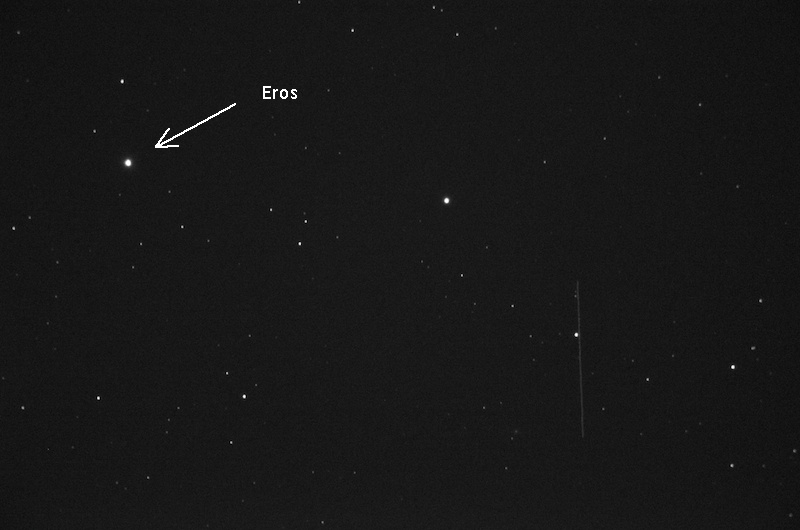
I then noticed that the camera clock had drifted since I had last set it (months ago). I reset it to match WWV. At 2330 MST, 30 minutes before imaging for the Eros project, the clouds were over the western half of the sky. The clouds reached Eros at 2335 MST. I began monitoring WWV time signals at 2345 MST. At 235945 MST, I began the 30 second, ISO 6400, exposure, even though the area of the sky was covered by thin clouds. This is the image:
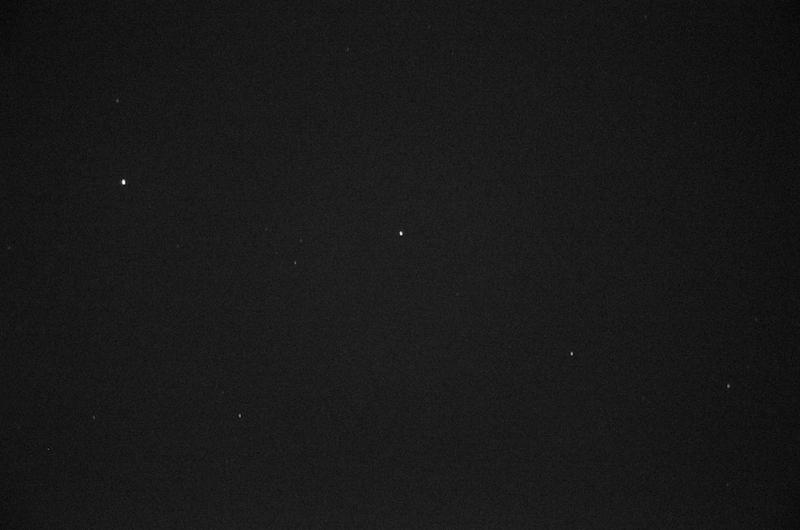
Hopefully, there would be some usable stars for the position analysis.
Closed the observatory at 0022 MST, 49°F.
Per the instuctions on the Eros project web page, I submitted the image to Astrometry.net. Unfortunately, Astrometry.net was unable to calibrate the image, even in the advanced mode. So, no data was submitted for the Eros project.
Go to the previous report.
Return to the Cassiopeia Observatory Welcome Page.